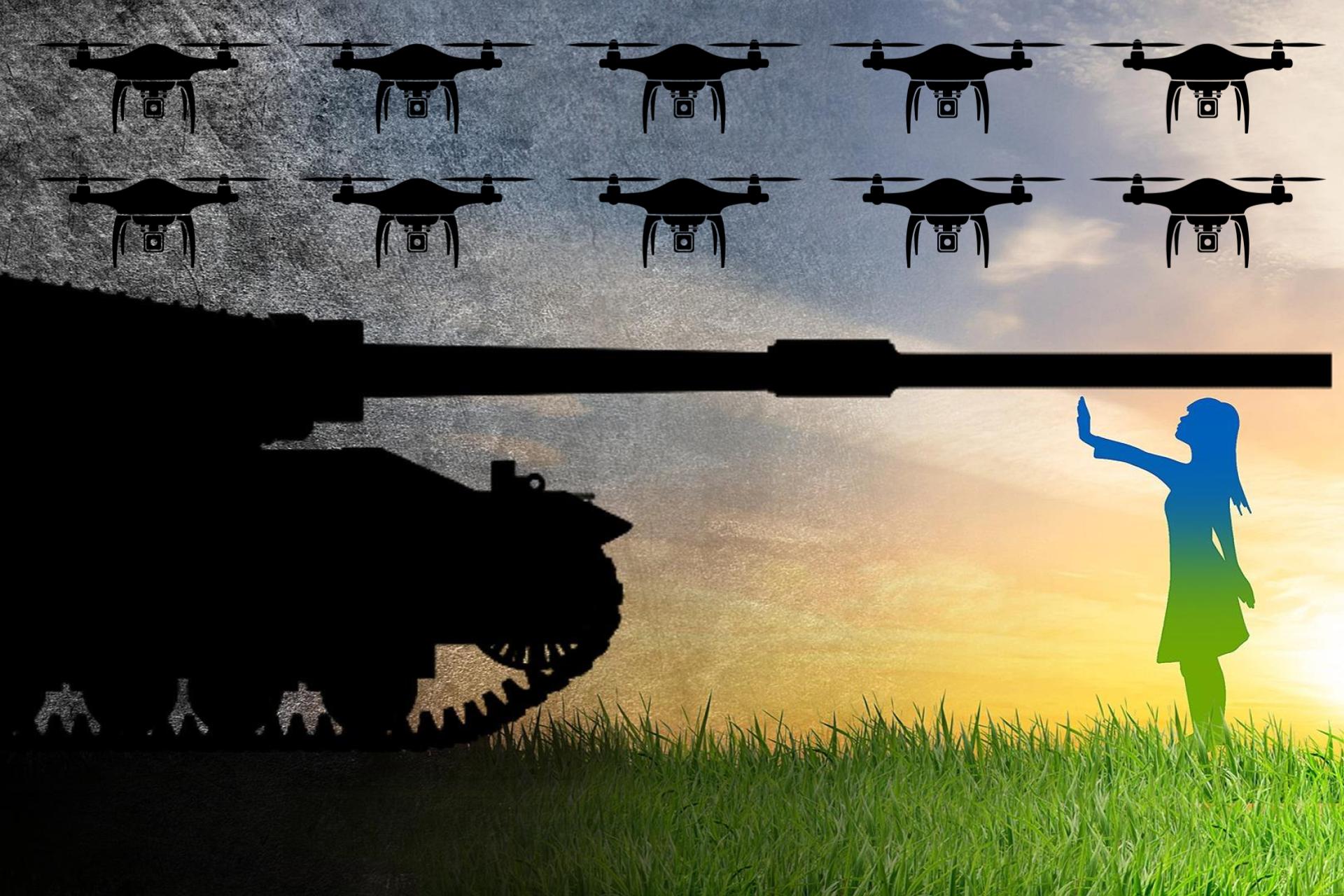Western analysts and officials say the U.S. is struggling to quickly deploy sufficient equipment for Ukraine to effectively counter the threat posed by the Iran-built Shahed-136 drone that Russia has fielded to attack civilian infrastructure, The Wall Street Journal reported Monday.
The U.S. Department of Defense awarded a contract to L3Harris Technologies to supply 14 Vehicle Agnostic Modular Palletized ISR Rocket Equipment to help Ukraine ground forces fight hostile drones.
The portable VAMPIRE kit will allow Ukraine ground forces to target and shoot down enemy drones and defend against adversary ground threats. The systems ordered by DoD are tailored to provide critical defense assets to help Ukraine protect against attacks on civilian infrastructure.“We’ve invested in procurement, testing and certification since August so VAMPIRE production can begin without delay,” said Luke Savoie, President, Intelligence, Surveillance and Reconnaissance, L3Harris. “We’re committed to supporting a U.S. strategic partner with a robust capability, as the people of Ukraine continue to defend their country and protect their independence.”Under the DoD contract, L3Harris will install VAMPIRE kits on U.S. government-provided vehicles for agile combat support to the Ukrainian battlefield. The contract calls for L3Harris to deliver 14 VAMPIRE systems to DoD, with four delivered by mid-2023 and ten more delivered by the end of 2023.
According to the report, the first four VAMPIRE units are set to be delivered to Ukraine by mid-2023 and the rest will be ready by the end of the year, highlighting the challenge of supplying enough technologies to the Eastern European country.
Richard Ast, director of unmanned systems technology at DOD’s research and engineering directorate, said at a conference in December that his office was turning to industry to help develop platforms that could counter unmanned systems, particularly autonomous drones being fielded in large numbers.
Companies such as the Netherlands-based Robin Radar Systems and Utah-based Fortem Technologies are reportedly developing their capabilities so that they may counter Iran-made drones as the Russia-Ukraine war approaches its first anniversary.
Fortem Technologies develops solutions and strategies in C-UAS (counter-unmanned aerial systems), ISR (intelligence, reconnaissance, surveillance), perimeter security, airspace safety, and several emerging airborne markets.
Best known for our TrueView® radars and autonomous DroneHunter® interceptors, we work with military, government, and commercial customers to solve drone-related security and defense challenges while simultaneously laying the groundwork for AAM (advanced air mobility).
With backing from Toshiba, Boeing, DCVC, Mubadala, Signia Venture Partners, and other strategic partnerships, Fortem Technologies continues to push the limits of critical thinking and technical innovation, earning a reputation as a leader in airspace security and defense.
Bill Haraka, vice president of defense and security at Robin Radar, said the company is working to improve the capability of its sensors to detect Shahed-136 and other larger drones.
The West is making efforts to transfer equipment and develop technology to help Ukraine strengthen its “patched” air defense system against the threat of Russian UAVs.
More than three months since Russia began massively using suicide drones (UAVs) to attack Ukraine’s strategic infrastructure, the US and its Western allies are racing to overcome many challenges to defeat the enemy. can help Kiev counter the threat posed by them.
The Pentagon announced in August last year that it would provide Ukraine with an anti-UAV system called Vampire, but it was not until mid-December that it approved a $ 40 million contract for this weapon. It is not until mid-2023 that the first 4 Vampire complexes can be delivered to Ukraine and 10 more by the end of the year.
The US Department of Defense did not say why it took so long to approve the agreement to transfer Vampires to Ukraine. Luke Savoie, director of the intelligence, surveillance and reconnaissance equipment business at L3Harris Technologies, the company that makes Vampire, said the problem lies in the paperwork and procedures.
The agreement to provide Vampire systems shows that Washington and its allies are working to help Kiev strengthen its air defense shield against the threat of Russian UAVs.
“I think Ukraine needs a lot of systems like Vampire to deploy to all fronts,” said Sam Bendett, a UAV expert at the Center for Naval Analysis (CNA), USA. “They will need to place hundreds of systems around major cities, important military facilities, military bases, critical infrastructure and the like.”
Vampires use high-definition sensors to track airborne threats, including UAVs, and then intercept them with laser-guided munitions. According to L3Harris, this system is designed to be very compact, to fit even on the back of a pickup truck.
However, the slow process of Vampire transfer also shows that the West faces many difficulties and challenges in its efforts to help Ukraine possess an effective and fast air defense system.
Ukraine has had some success in its efforts to shoot down UAVs, but so far does not possess a system that offers comprehensive defense. Ukraine believes that Russia has used cheap Iranian-made Shahed-136 UAVs to massively attack military and civilian infrastructure targets since September last year.
Fortem CEO Jon Gruen also revealed that the company has made improvements to its DroneHunter system to help address the threat posed by Iranian drones.
Fortem CEO Jon Gruen and Security Today Editor-in-Chief Ralph C. Jensen Discuss Fortem’s Counter-UAS Advantages
In this episode of SecurPod, Ralph C. Jensen, editor-in-chief of Security Today magazine, talks with Jon Gruen, CEO of Fortem Technologies. Fortem Technologies is a well-known unmanned aerial surveillance manufacturer with experience on consumer and commercial applications, as well as on the battlefield for the past 10 months in Ukraine. Gruen highlights his experience and Fortem Technologies’ capabilities on a global platform, discussing the current state of the drone threatscape, both from a public and military standpoint. In addition, learn about what to expect from the C-UAS space in the future and the evolution of drone technology for years to come.
HLS.Today Source: ExecutiveGov








